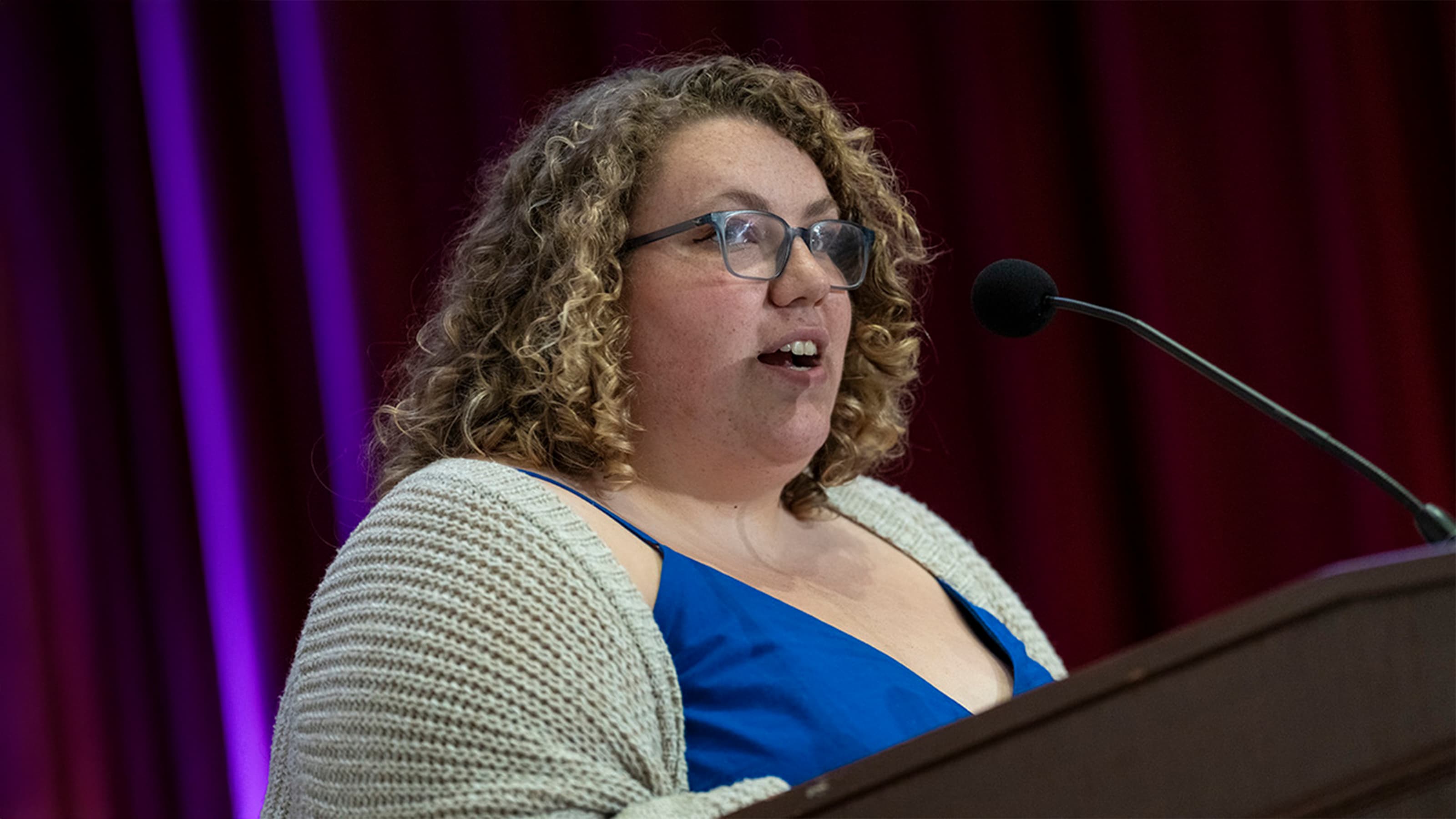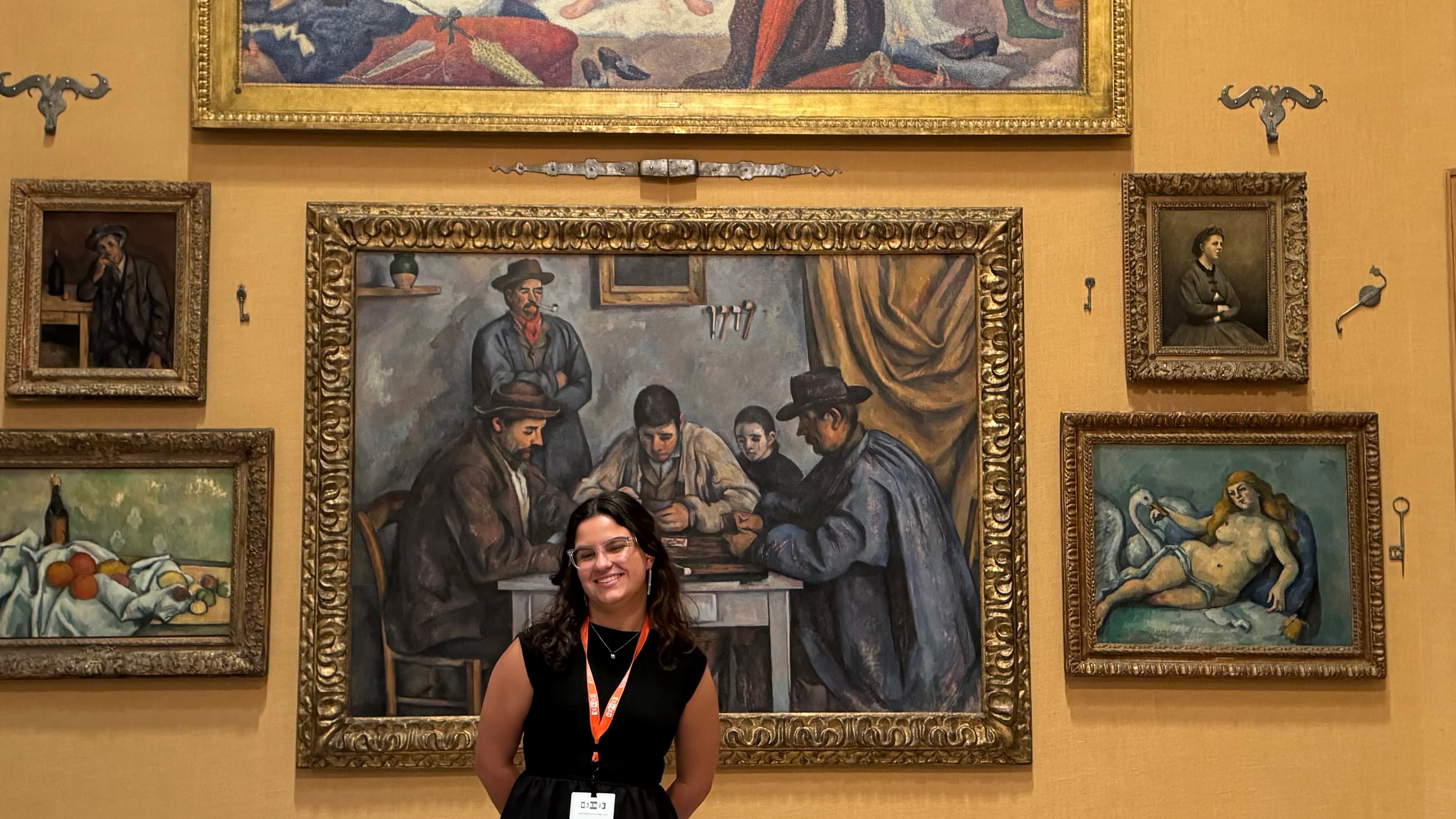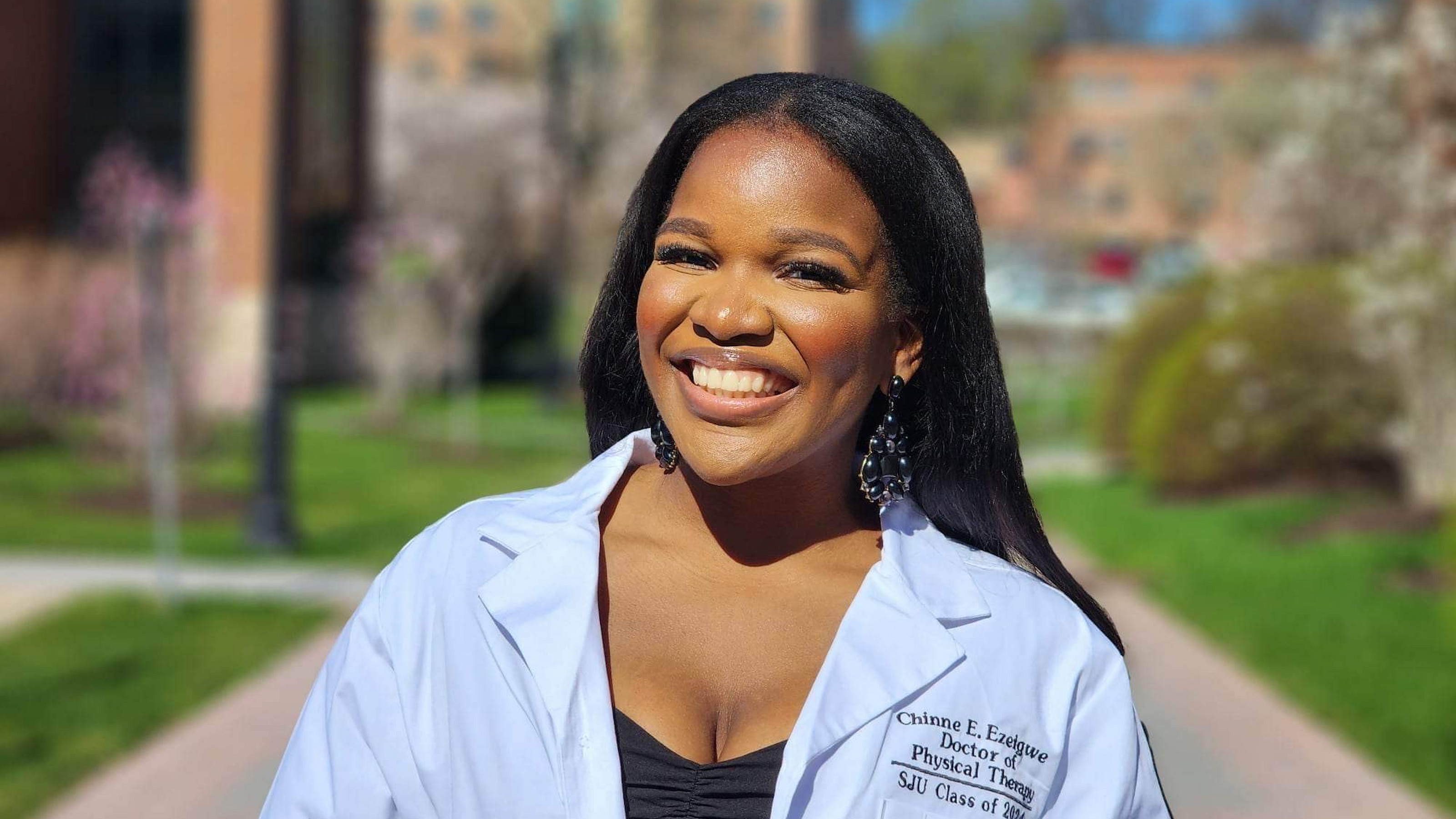Swapping Screens for Sidewalks: HawkMates Featured in ‘Time’ Magazine Urge Parents to Prioritize Real-Life Connections
For Saint Joseph’s alumni Holly, BS ’09, and Ryan Moscatiello, BS ’09, The Balance Project is more than a nonprofit — it’s a calling to help children and families nationwide lead more balanced lives in a tech-saturated world.
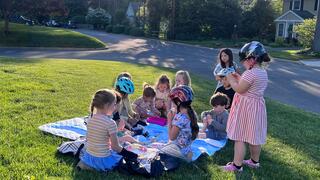 Kids in the Moscatiello’s neighborhood enjoying a picnic.
Kids in the Moscatiello’s neighborhood enjoying a picnic.
Working parents of three Holly, BS ’09, and Ryan Moscatiello, BS ’09, joined me for an early morning interview after getting their kids out the door for school. Their daughters, Molly, 7, and Ruby, 5, had biked alongside friends that morning, and in the years to come, Reese, 3, will follow suit.
In Their Words
Holly Moscatiello, BS '09
The Balance Project Co-Founder
It’s a simple routine that reflects the mission of The Balance Project, a nonprofit founded by the Moscatiellos, which hopes to disrupt the cycle of so-called iPad kids by advocating for a healthy balance between technology and real-world experiences.
Biking to school with friends, unsupervised play, a solo trip to the grocery store — all activities championed by The Balance Project — were once hallmarks of a free-range childhood. But with the advent of smartphones, tracking technology and social media, the need for constant connectivity often overshadows the need for disconnectivity and independence.
“There was a recent Harris Poll done with 8 to 12 year olds. Half of them already owned phones but fewer than half had even so much as walked down a grocery aisle by themselves. A quarter of them weren’t even allowed to play in their own yards by themselves,” Ryan said.
While the Moscatiellos had always endorsed a tech-balanced childhood for their own kids, they knew that, as their kids got older, the societal demand for screens was a battle they couldn’t fight alone. And so, with the support of friends, neighbors and concerned parents across the country, The Balance Project was born.
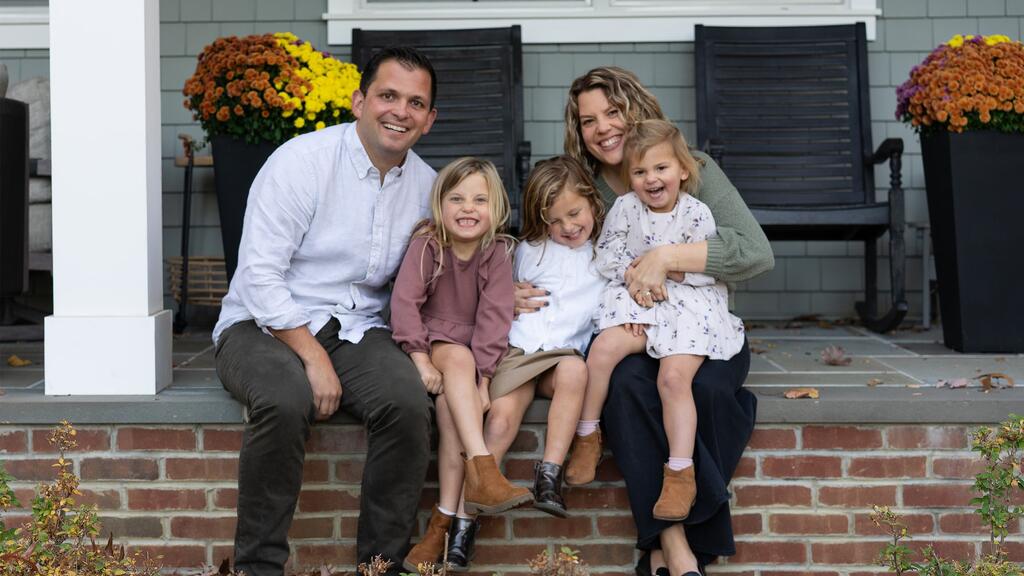
What inspired The Balance Project?
Holly: Our kids. Ryan and I have always been conscious of care for the whole person, cura personalis. When I started to hear more about the impact of too much screen time and technology on childhood and I read “The Anxious Generation,” I realized, if we don’t do something about this, the foundation we set for our kids could be taken away by something out of our control.
What has been the most surprising statistic you’ve learned in your work?
Holly: Statistically speaking, it would take 750,000 years for your kid to get kidnapped if you let them play on the front lawn and didn’t watch them. It just puts into perspective that there’s such a “worst first” frame of mind among parents.
Can you talk about some of the programs and resources offered by The Balance Project?
Ryan: For parents, we’ve hosted panel discussions with a wide variety of people — school administrators, psychologists, students, play specialists — to discuss the topic [of screens] broadly and show how nuanced it is. We also host “Devices and Delights,” an alternative device fair that covers kid-safe technology, app-blocking technology and screen-time reduction devices like the Aro Box.
Holly: In the community, we’ve started Stride and Ride, which raises awareness that walking and biking builds independence. It’s something some parents are super afraid of, so we want to educate them that it’s worthwhile, while eliminating the barriers to their concerns around safety.
If we don’t do something about this, the foundation we set for our kids could be taken away by something out of our control.
Holly Moscatiello, BS ’09
And then in schools, we’ve accelerated discussions around balancing technology and focused on “transition years.” Every school might be different, but in our community, the cultural norm has been to get a smartphone as you enter middle school. We held an educational event with a clinical psychologist this year to talk to parents and students about the fifth grade brain and how important it is to create confidence pathways and independence pathways instead of scrolling pathways — and they got it. Only three fifth graders have smartphones this year [compared to 55 the year prior].
How has your Jesuit education impacted your work with the nonprofit?
Holly: Every day, we’re embracing the idea of men and women with and for others, and we’re thinking of our kids as whole people, mind, body and spirit. It’s woven into the fabric of who we are, how we parent and how we have approached our work.
How are you growing the Balance Project beyond Little Silver, New Jersey?
Holly: We have 100 communities across the country and one starting up in India. We’re growing it mostly by word of mouth, and then we’ve been working with a wonderful dad and developer in Chicago, who helped us build an online platform, Four Norms, to scale it very quickly. It's very exciting and we hope to continue to grow and spread our message to even more communities!
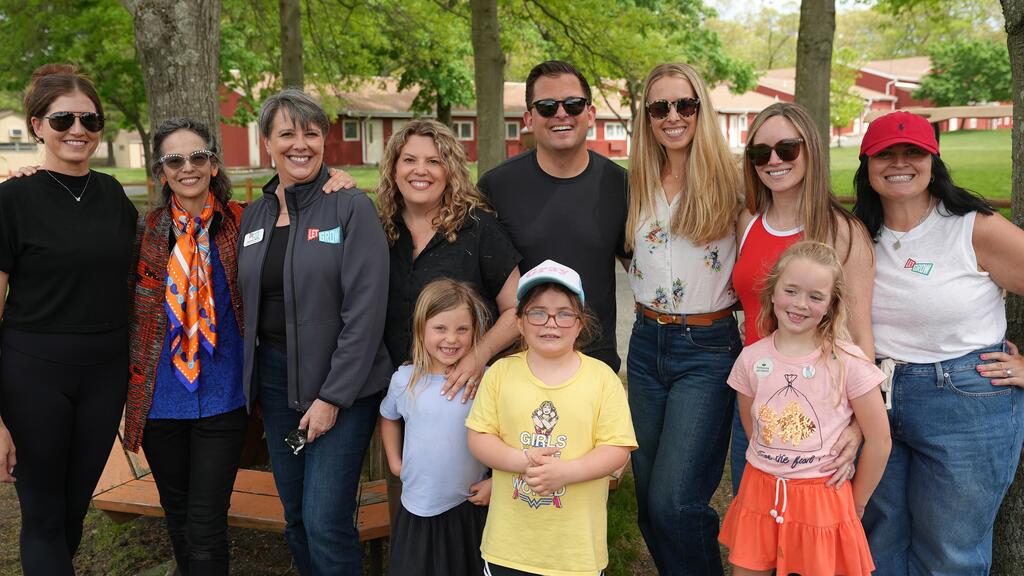
Full-time jobs, three kids, a nonprofit — how do you balance it all?
Ryan: We’re not! We work during the day, take care of our kids when we get home and work on The Balance Project when they go to bed. We’re repurposing what used to be date night for Board of Education meetings — but then we go out to dinner afterward.
Holly: We find it fun. And this is meaningful, purposeful work that is going to impact our kids and other kids.
In your recent Time magazine feature — congratulations, by the way — you spoke of balancing technology and real life. What does that look like in your home?
Holly: We made our kids a part of the conversation. We approached them and said, we’re learning more about how watching TV and spending too much time on screens isn’t good for your brain so we’re going to limit the amount of time we spend on screens. And they get it. They know we’re not making rules for rules’ sake. And they hold us accountable, too!
That's great! Is it hard to practice what you preach?
Ryan: In the beginning, I was not good about my own personal screen time. I was compulsively checking my phone and feeling the need to respond to things right away. But when you start to set healthy habits and boundaries, you start to feel the impact.
Now we’re trying to model behaviors with our screen time; the activities we do; the responsibility, independence and unstructured time we give our kids — in the hopes that others will be inspired to join us, too.
Interested in learning more or getting involved? Visit the Balance Project website for more details or read their Time magazine feature.

